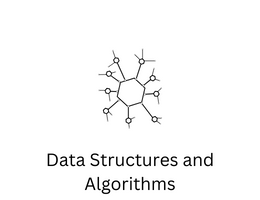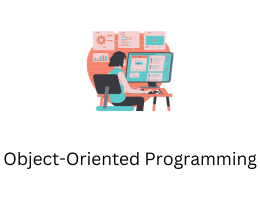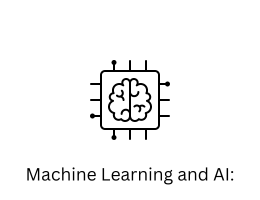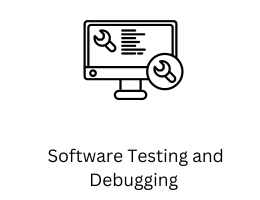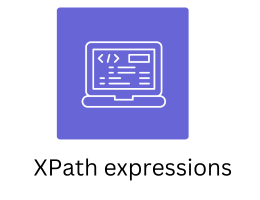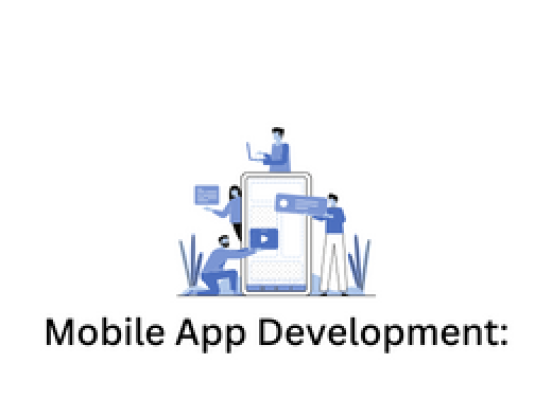
Mobile App Development
- By admin --
- Monday, 29 Jan, 2024
Mobile App Development: Building for a Connected World
In the ever-evolving landscape of technology, mobile app development stands out as a dynamic and integral field. With the proliferation of smartphones and tablets, mobile applications have become an essential part of everyday life, offering convenience, connectivity, and functionality at our fingertips. From social networking and entertainment to productivity and commerce, mobile apps cater to a diverse range of needs and preferences, shaping the way we interact with the digital world.
The Evolution of Mobile Apps
Mobile app development has come a long way since the inception of smartphones. Initially, mobile apps were simple and limited in functionality, primarily serving basic tasks like making calls, sending messages, and managing contacts. However, with advancements in hardware capabilities, software frameworks, and internet connectivity, the possibilities for mobile app development have expanded exponentially.
Platforms and Technologies
One of the defining characteristics of mobile app development is the diversity of platforms and technologies available. The two major platforms, iOS and Android, dominate the market, each with its ecosystem of tools, languages, and development frameworks.
iOS Development
iOS, the operating system powering Apple's iPhone and iPad devices, is renowned for its user experience, security, and seamless integration with Apple's hardware. iOS app development typically involves using Swift or Objective-C programming languages, along with Apple's integrated development environment (IDE) called Xcode. Developers leverage frameworks like UIKit, SwiftUI, and Core Data to create intuitive and visually appealing apps for Apple's devices.
Android Development
Android, developed by Google, boasts the largest market share in the mobile operating system space. Android app development is characterized by its open-source nature, diverse device ecosystem, and flexibility. Developers primarily use Java or Kotlin programming languages, along with Android Studio IDE, to build feature-rich applications. Android offers a wide range of libraries and APIs, including Android Jetpack, Room, and Retrofit, empowering developers to create innovative and scalable apps for a global audience.
The Development Process
Mobile app development follows a structured process encompassing several stages, from ideation and design to development, testing, and deployment. Here's an overview of the typical development lifecycle:
-
Ideation and Planning: This stage involves defining the app's purpose, target audience, features, and monetization strategy. It includes market research, competitor analysis, and creating a roadmap for development.
-
UI/UX Design: User interface (UI) and user experience (UX) design are crucial for creating intuitive and engaging apps. Designers focus on wireframing, prototyping, and visual design to ensure a seamless user experience across different devices and screen sizes.
-
Development: Developers translate design mockups into functional code, implementing features, integrating APIs, and handling data management. Agile methodologies such as Scrum or Kanban are often employed to facilitate iterative development and collaboration within teams.
-
Testing: Quality assurance (QA) testing is essential to identify and rectify bugs, usability issues, and performance bottlenecks. Testing methodologies include manual testing, automated testing, and beta testing with real users to gather feedback and make improvements.
-
Deployment and Distribution: Once the app is thoroughly tested and polished, it is ready for deployment to the respective app stores—Apple App Store for iOS apps and Google Play Store for Android apps. Developers adhere to platform guidelines and submission requirements to ensure smooth approval and distribution.
-
Maintenance and Updates: Post-launch, ongoing maintenance is crucial to address user feedback, fix bugs, and introduce new features. Regular updates and optimizations are key to keeping the app relevant and competitive in the ever-changing app ecosystem.
Emerging Trends and Future Directions
Mobile app development continues to evolve rapidly, driven by emerging technologies and changing user behaviors. Some notable trends shaping the future of mobile apps include:
- Augmented Reality (AR) and Virtual Reality (VR): AR and VR technologies are revolutionizing mobile experiences, offering immersive gaming, educational, and shopping experiences.
- Internet of Things (IoT): Mobile apps are increasingly being used to control and interact with IoT devices, enabling smart home automation, healthcare monitoring, and industrial applications.
- Artificial Intelligence (AI) and Machine Learning (ML): Integrating AI and ML capabilities into mobile apps enhances personalization, predictive analytics, and natural language processing, enabling intelligent automation and decision-making.
- Progressive Web Apps (PWAs): PWAs bridge the gap between web and native apps, delivering fast, reliable, and engaging experiences across devices, without the need for installation from an app store.
- Blockchain and Cryptocurrency: Mobile apps are exploring blockchain technology for secure transactions, decentralized finance (DeFi), and digital identity verification, unlocking new possibilities for financial services and digital assets.
Conclusion
Mobile app development is a dynamic and multifaceted discipline that plays a pivotal role in shaping the digital landscape. From conceptualization to deployment, developers leverage a myriad of tools, platforms, and technologies to create innovative and user-centric applications. As technology continues to evolve, mobile apps will continue to evolve, empowering users and businesses alike to navigate and thrive in an increasingly connected world.

